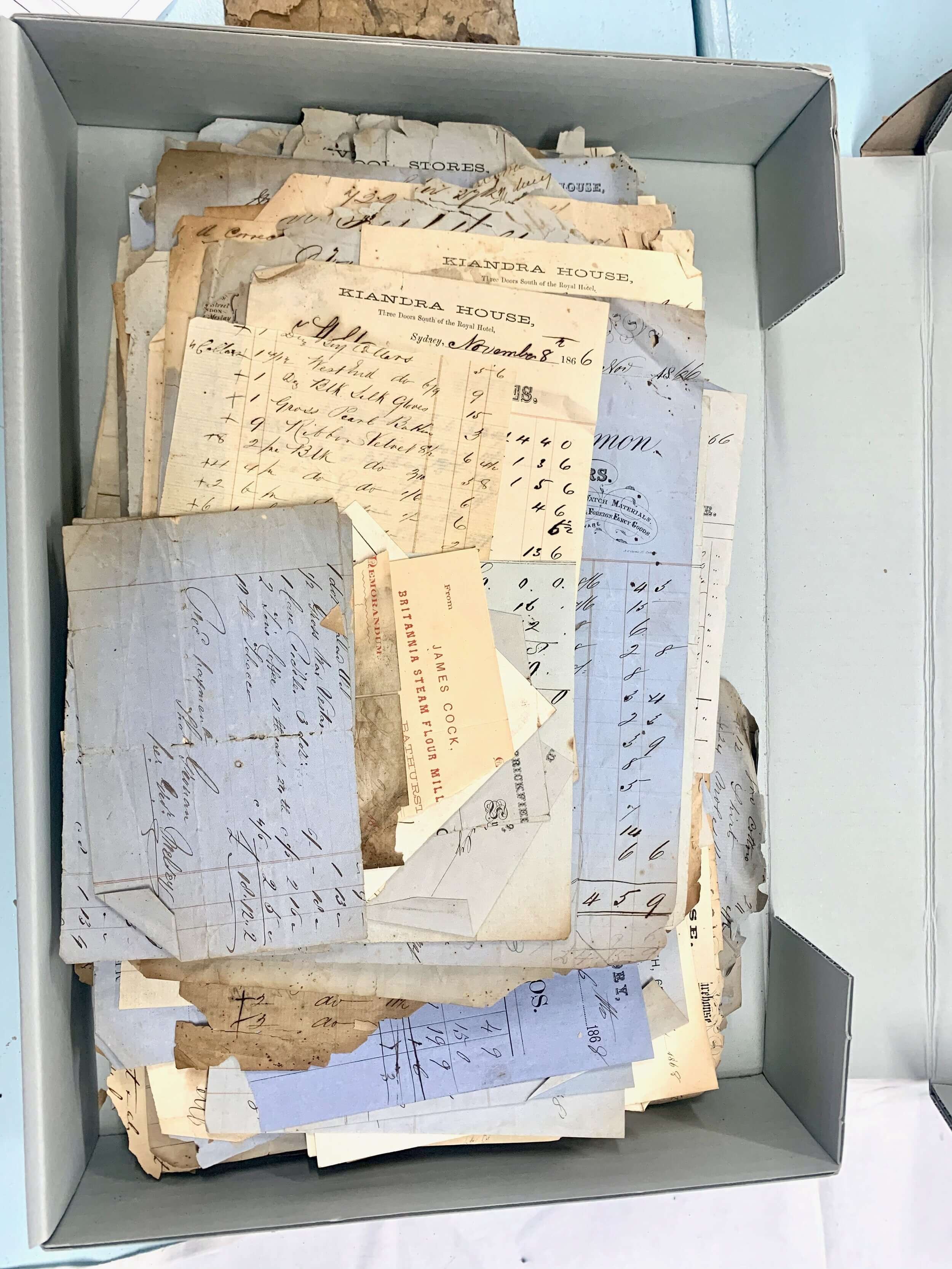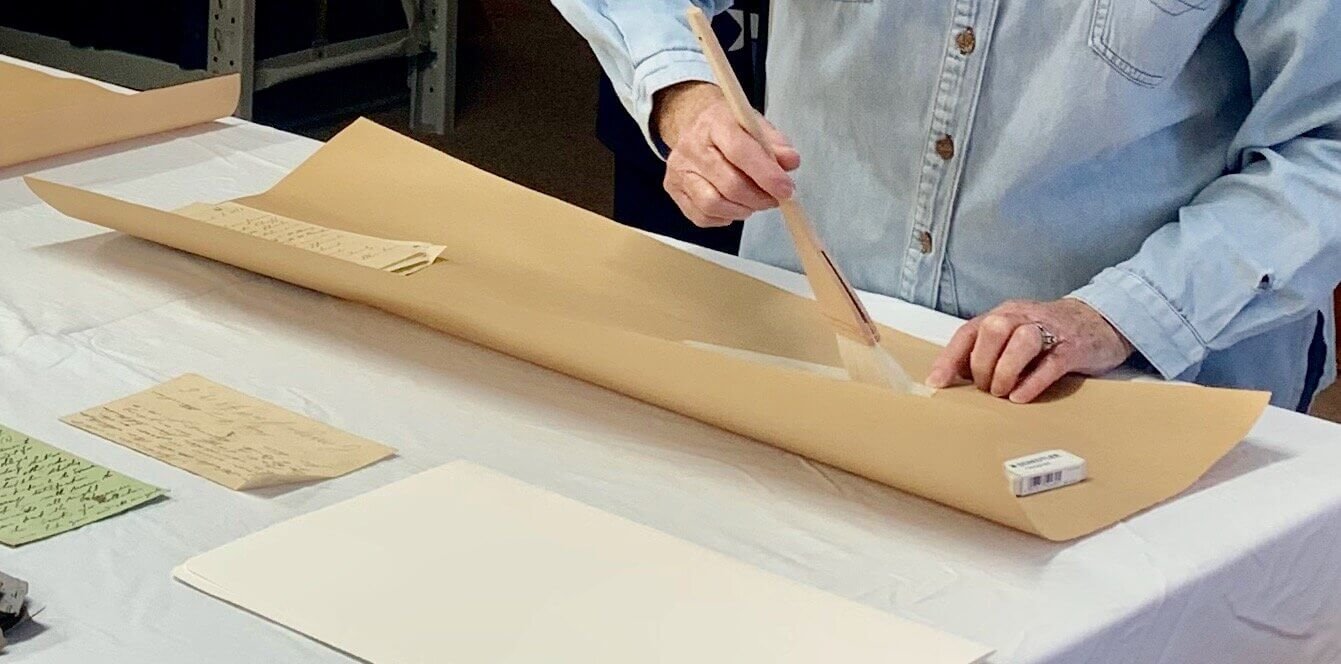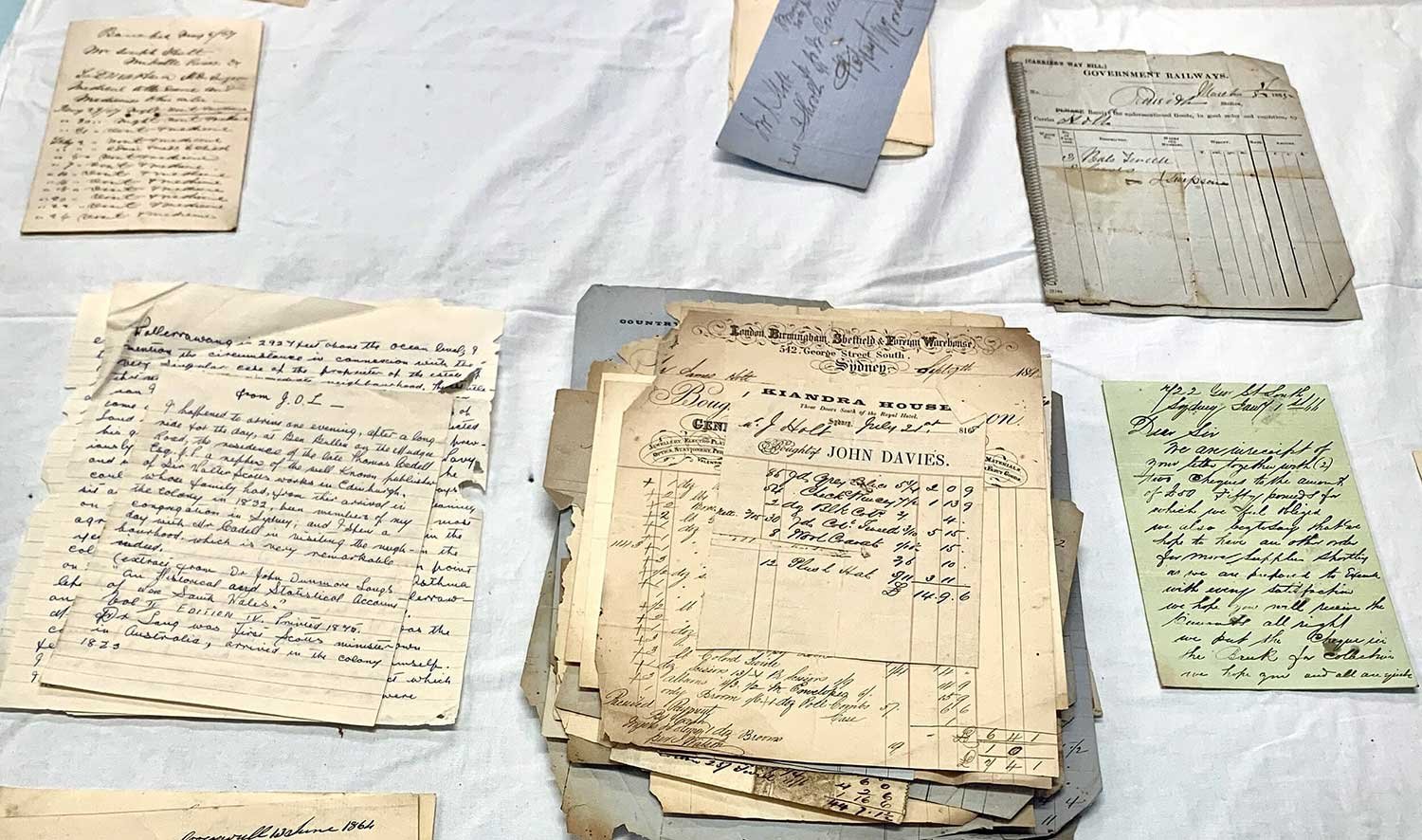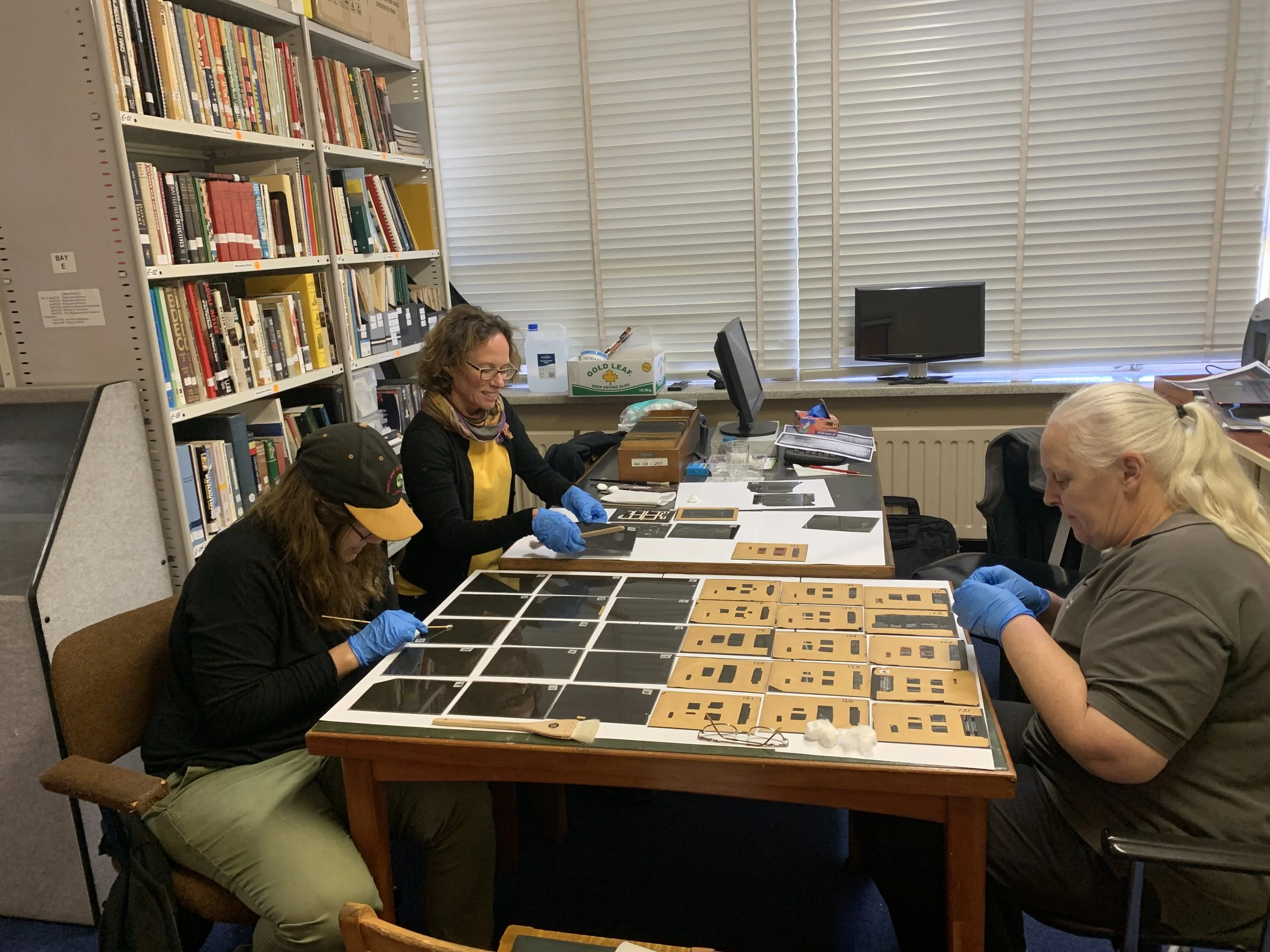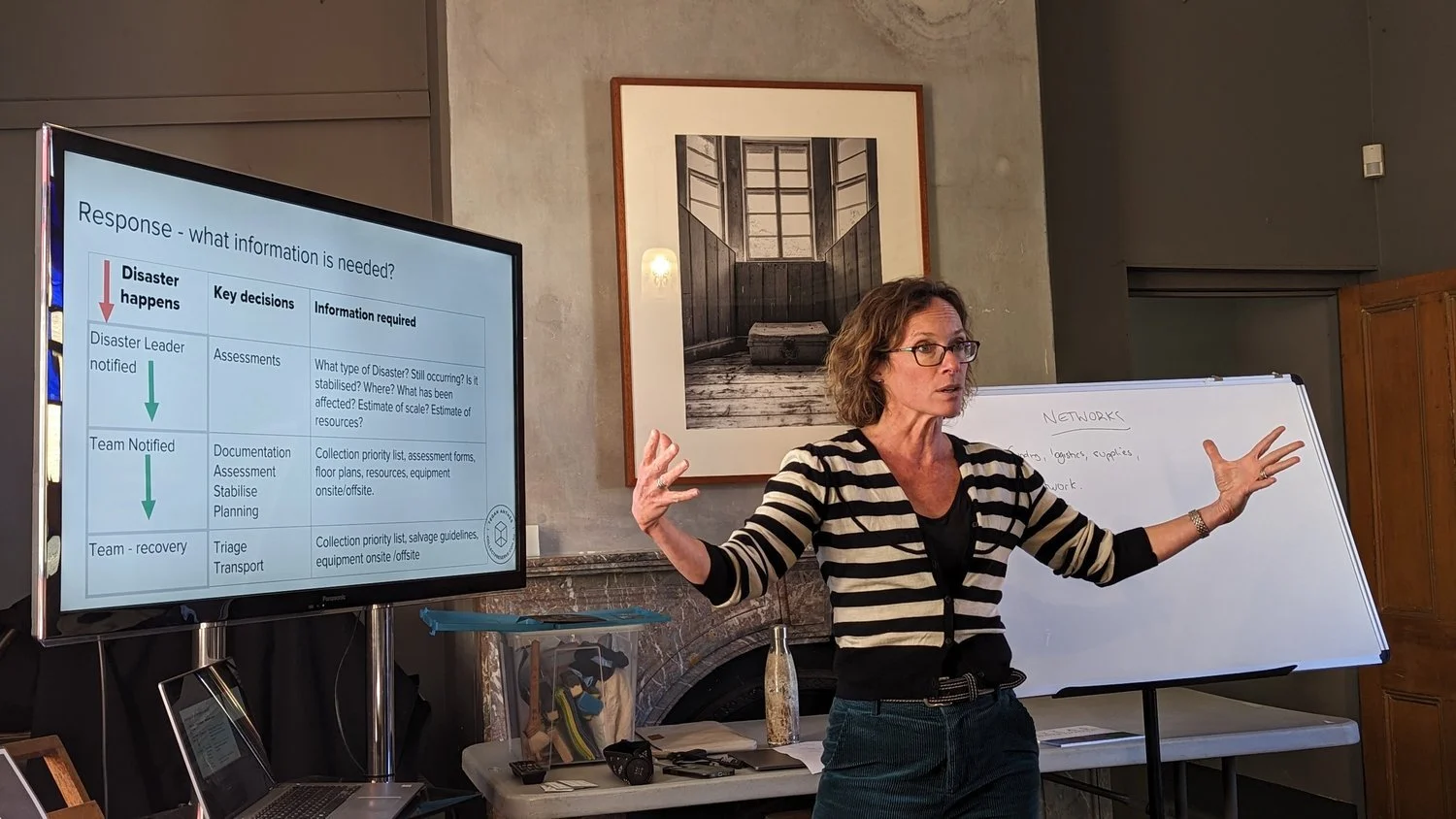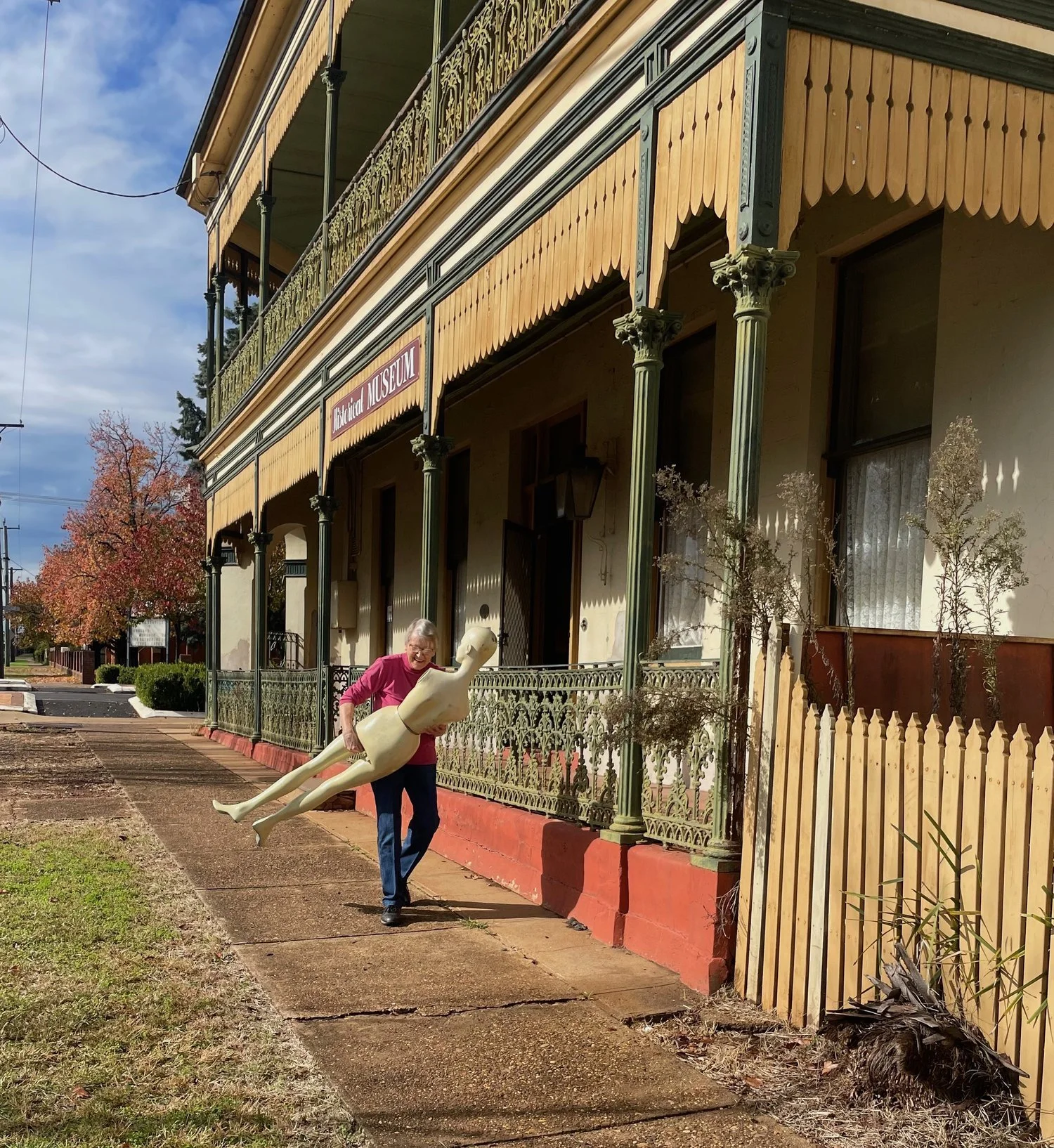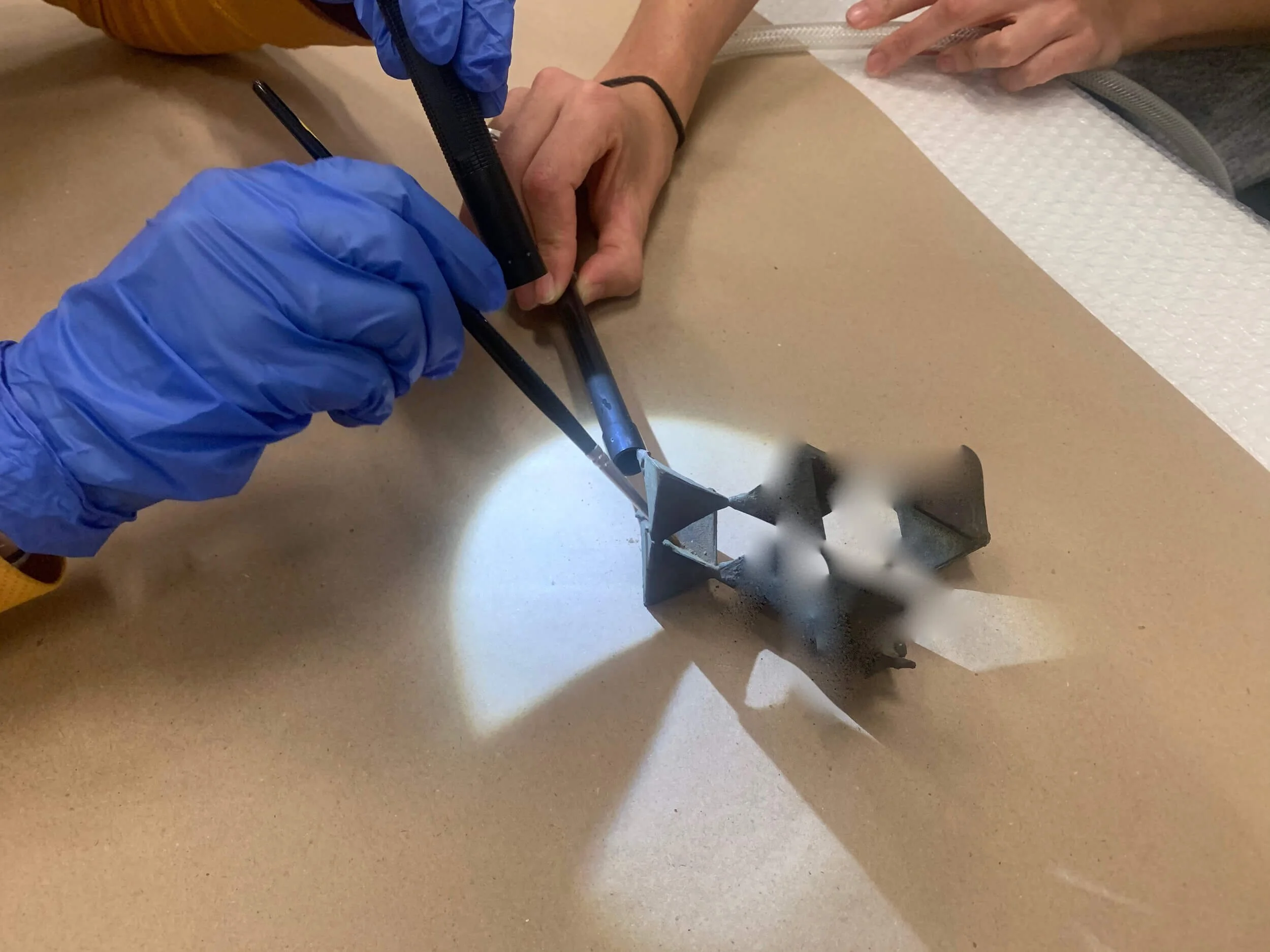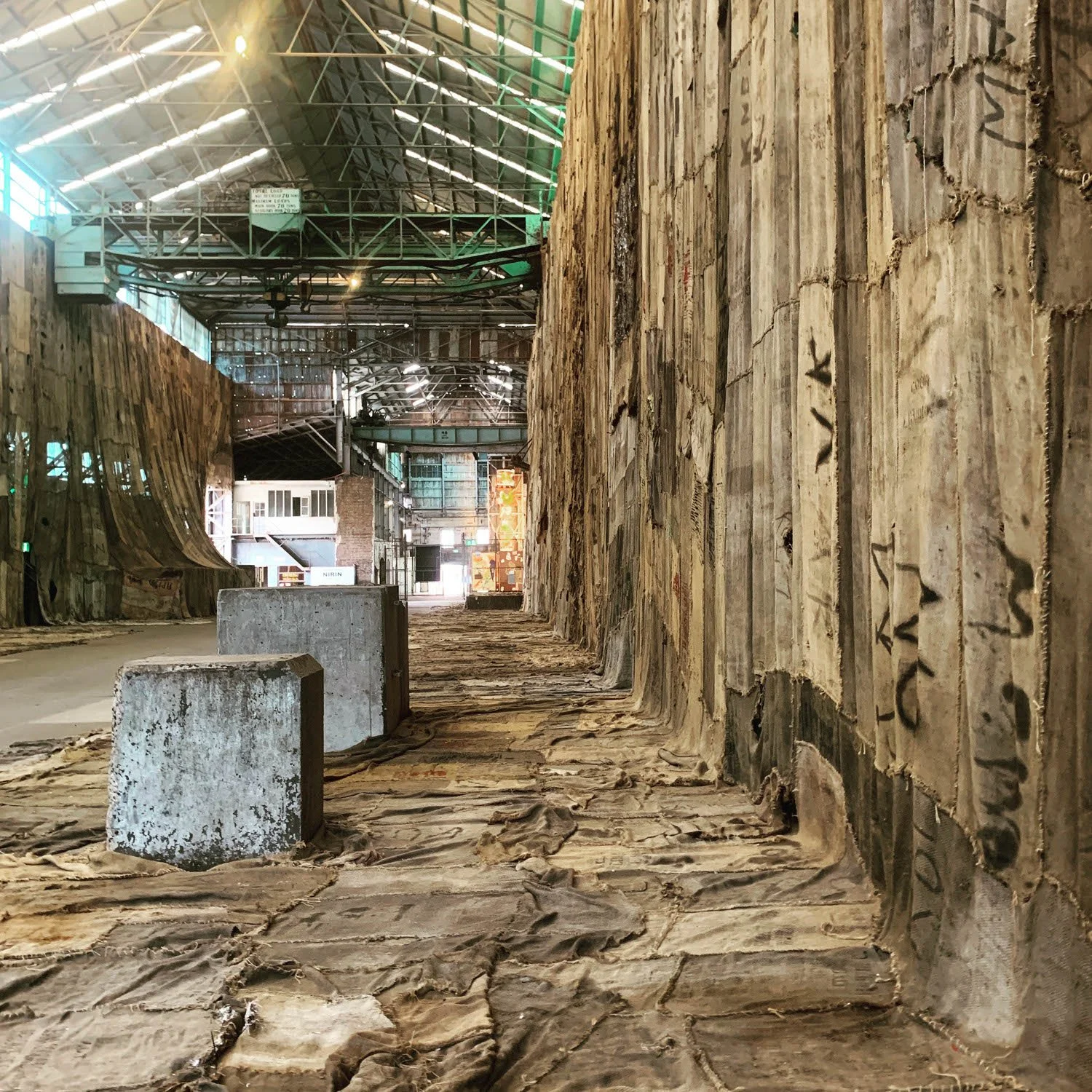Preserving local Histories Through Museum Advisory and One-on-One Workshops
I have had the opportunity to work with Jan Saundercock at the Lithgow and District Family History Society (LDFHS) as Museum Advisor for Lithgow LGA. One of the recent projects that Jan and I worked on was the sorting, cleaning and rehousing of the Holt collection. Jan posted about the collection here on their Facebook page.
Detail of shopping lists
The Holt collection contains a variety of papers, receipts, documents and ephemera that were donated to the LDFHS. Jan and I inspected the collection together in early March and discussed an approach for future visits. Jan felt that the collection was significant but as yet had not gone through the entire contents - due to fragility, time and resources.
After the initial inspection I suggested a small shopping list of supplies that could be used during the next visit to systematically work through the collection, sorting, cleaning and rehousing. A collection care project. The shopping items included soft Hake brushes, nitrile gloves, archival erasers, archival paper and enclosures such as four flap folders and envelopes and boxes. We also added archival tissue, Pigma pens, soft pencils and wrapping Tyvek to the list. Some equipment was suggested to assist with other projects that had been previously identified, including rehousing photographs, textiles and maps.
The visit was postponed due to lockdown and COVID-19 restrictions but this gave Jan time to source the equipment and receive the supplies.
Sorting the collection
The afternoon arrived when we could get together and tackle the collection of documents. The first step was to understand the contents of the box.
We spent some time reading the documents. It was delightful to uncover the various items that were being purchased - Velvet ribbons, silk gloves, collars and pearl buttons on one list. And coffee, tobacco, and wax vestas on another. Plus many other necessities such as bullocks, horses, chaff, farm equipment, meat and other sundries.
Areas of damage - tears, losses and embrittlement of the paper.
We sorted the collection into various categories - supplies that were being purchased, payments or bills to be paid, correspondence, travel and other categories.
The collection was in fair to good condition. There were many different types of papers and most had signs of handling damage. There were small to large tears, folds and creases, and some losses of information. Some papers were embrittled due to inherent instability and others were in better condition. Most had small holes in the centre from being processed and ‘spiked’ on an organising spike.
Jan brush cleaning a document using a Hake brush
I demonstrated how we would clean the documents and together we worked through the various categories. The process of cleaning included brushing out with the Hake brush while supporting any damage areas. Some areas were cleaned with the Staedtler eraser. Any large tears were repaired with archival repair tape. Some documents that had many tears were placed into polyester sleeves to assist with handling and provide protection against further damage.
Each category was then rehoused into an archival file folder and into an archive box.
The afternoon went by quickly and unfortunately we did not get to finish the whole project. However, this one-on-one workshop has provided Jan with the skills to tackle other paper collections within the Lithgow & District Family History Society.
I look forward to seeing the project finished by Jan and the other volunteers at Lithgow & District Family History Society in the coming months.


